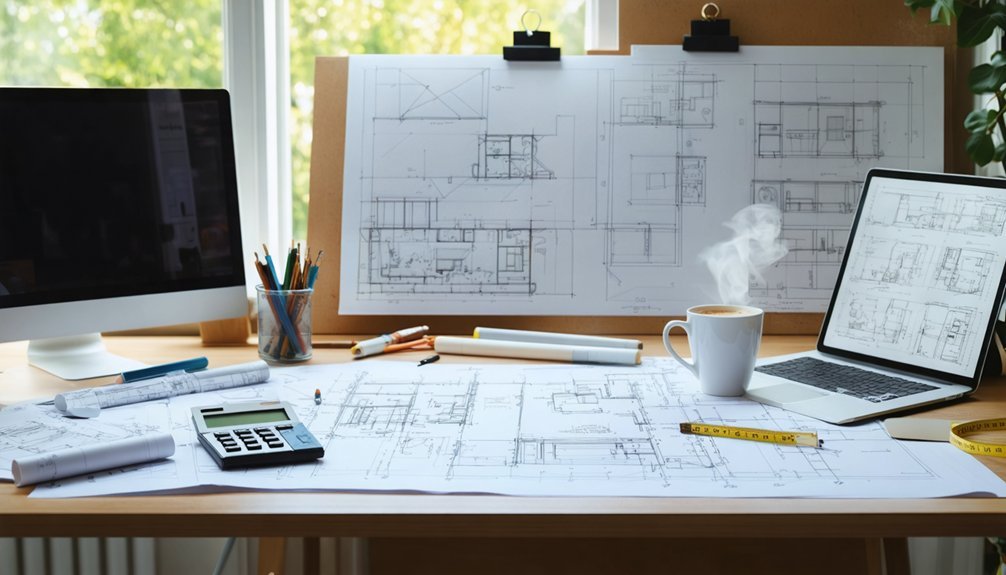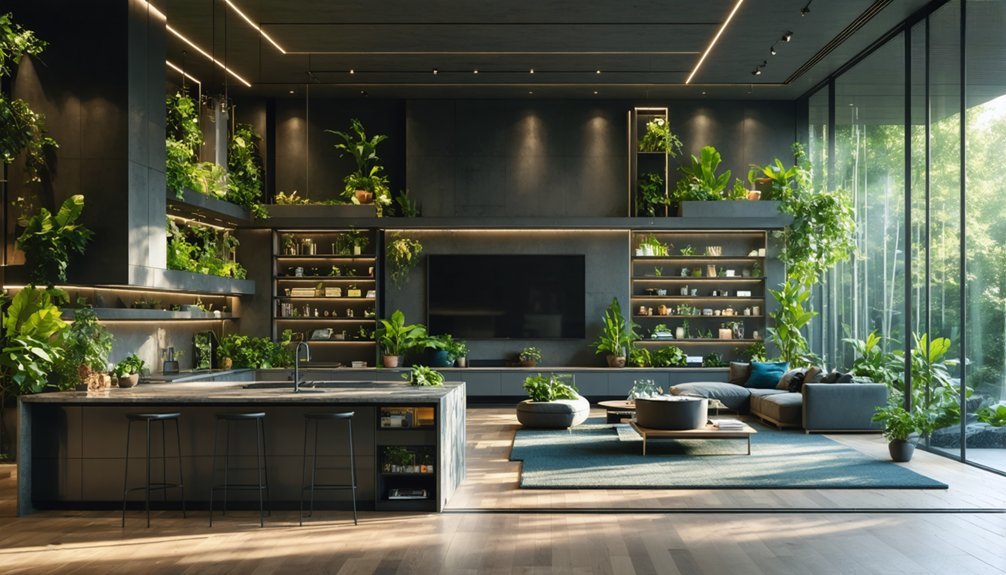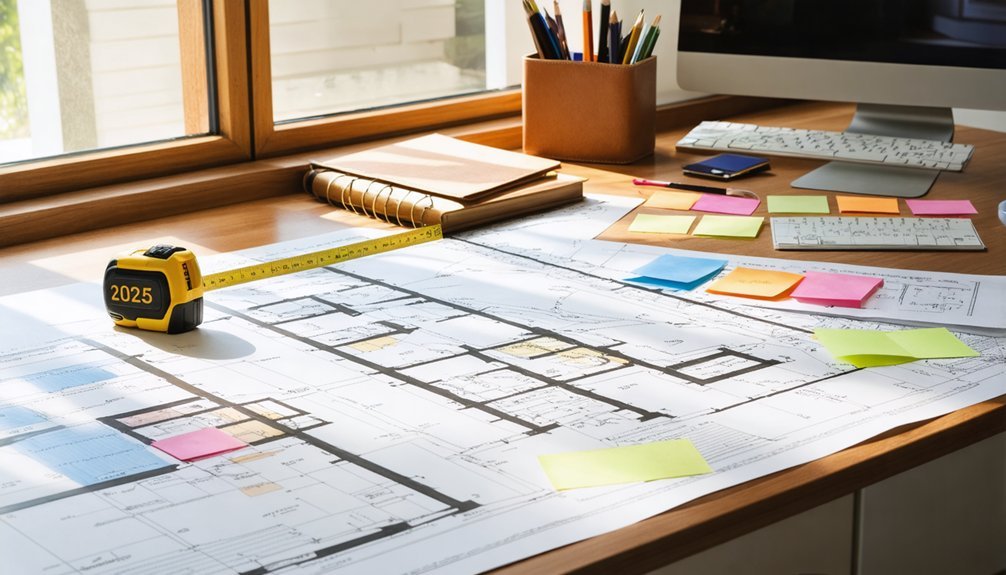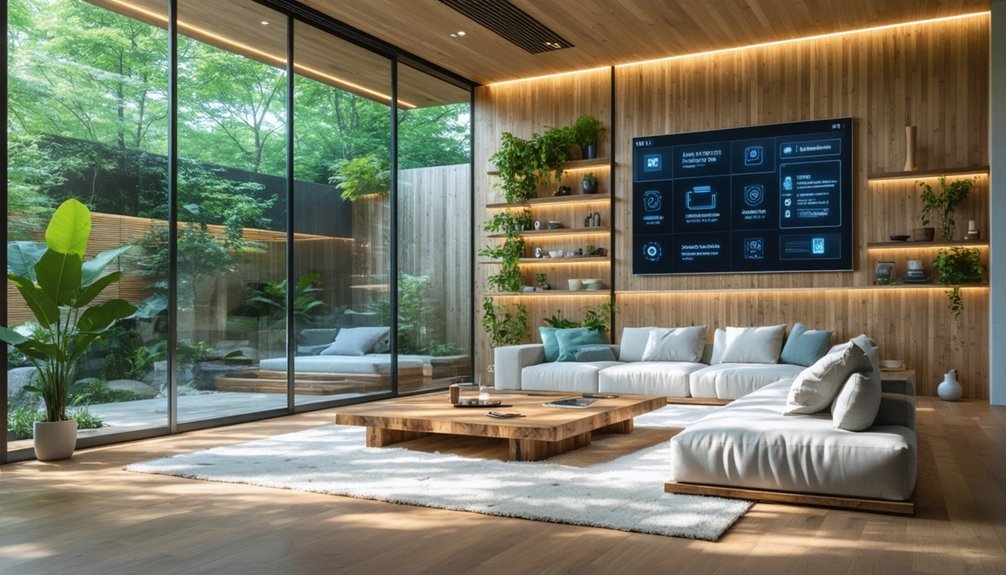Your cart is currently empty!
Complete Guide to Planning Your 2025 Home Remodel

Your 2025 home remodel should blend cutting-edge design with smart technology and sustainability. Start by creating a detailed budget that includes a 20% buffer for unexpected costs, then map out a realistic timeline with key milestones. You'll want to integrate energy-efficient features like smart windows and automated systems while incorporating biophilic elements. With proper planning and the right contractors, you'll transform your space into a future-ready haven that maximizes both function and value.
Key Home Design Trends and Innovations for 2025

As homeowners increasingly prioritize functionality and sustainability, the design trends for 2025 reflect a blend of technological innovation and environmental consciousness. You'll see smart windows that automatically adjust tint based on sunlight, and energy-efficient appliances integrated with home automation systems. Sustainable materials like bamboo flooring and recycled composites are gaining popularity.
Open-concept layouts continue evolving with flexible spaces that transform from home offices to entertainment areas. Biophilic design elements incorporate living walls and indoor gardens, while voice-activated fixtures and touchless technology enhance daily routines. Color trends favor earth tones and natural textures, complemented by bold accent pieces.
Modern kitchens showcase multifunctional islands with built-in charging stations and hidden storage solutions. Bathroom designs emphasize spa-like features with water-saving fixtures and smart mirrors displaying health metrics.
Creating Your Budget and Financial Strategy
While these exciting design trends can inspire your renovation vision, establishing a realistic budget sets the foundation for your entire remodel project. Start by researching current material and labor costs in your area, then add a 20% buffer for unexpected expenses. You'll need to determine your funding source – whether it's savings, a home equity loan, or a renovation mortgage.
Break down your budget into major categories: structural work, materials, labor, permits, and design fees. Don't forget to factor in temporary housing costs if you'll need to relocate during construction. Create a detailed spreadsheet to track expenses and get multiple contractor bids to compare prices. Consider phasing your project if the total cost exceeds your current budget – you can tackle high-priority renovations first and space out other updates over time.
Essential Timeline and Project Planning Steps

Once you've established your budget, creating a detailed project timeline becomes essential for keeping your remodel on track. Start by mapping out key milestones, including permit applications, contractor selection, material ordering, and construction phases.
Set realistic start and completion dates, factoring in potential delays due to weather, material availability, or contractor schedules. You'll need to allow 2-3 weeks for permit approvals, 3-4 weeks for contractor bidding and selection, and 1-2 weeks for material procurement. Break down each phase into specific tasks with clear deadlines.
Create a contingency buffer of 10-15% additional time to account for unexpected issues. Use project management tools or apps to track progress, coordinate with contractors, and maintain clear communication channels throughout your remodel timeline.
Selecting the Right Contractors and Materials
The success of your remodel hinges on choosing qualified contractors and high-quality materials. When vetting contractors, request multiple bids, check their licenses, and ask for references from recent projects. You'll want to verify their insurance coverage and ascertain they're experienced with your specific type of renovation.
For materials, prioritize quality over immediate cost savings, as superior products often prove more cost-effective in the long run. Here's what to look for in potential contractors:
- Licensed and insured with verifiable credentials
- Strong portfolio of similar projects
- Clear communication and detailed written estimates
- Positive reviews and references from past clients
Don't forget to research material suppliers, compare prices across multiple vendors, and consider the warranty terms for both labor and products. Request samples whenever possible to make sure you're getting exactly what you want.
Smart Home Technology and Sustainable Solutions

Modern remodeling projects increasingly embrace smart home technology and eco-friendly solutions to boost efficiency and reduce environmental impact. You'll want to contemplate integrating smart thermostats, LED lighting systems, and automated window treatments that learn your preferences while cutting energy costs. Solar panels and energy-efficient appliances offer long-term savings and sustainability benefits.
| Technology | Benefits | Cost Range |
|---|---|---|
| Smart Thermostat | 10-15% energy savings | $150-$300 |
| LED Lighting | 75% less energy use | $200-$800 |
| Solar Panels | 40-70% power reduction | $15K-$25K |
| Smart Appliances | 30% efficiency boost | $2K-$8K |
| Home Battery | Backup power storage | $8K-$15K |
Remember to choose systems that work together through a central hub, making your home both efficient and convenient to control from your smartphone or voice commands.
Conclusion
You're now equipped to tackle your 2025 home remodel with confidence. By staying on top of design trends, setting a realistic budget, creating a detailed timeline, choosing qualified contractors, and incorporating smart technology, you'll transform your space into a modern, sustainable haven. Don't forget to remain flexible throughout the process – even the best-laid plans may need adjustments. Start your planning today to guarantee a successful renovation tomorrow.
Leave a Reply